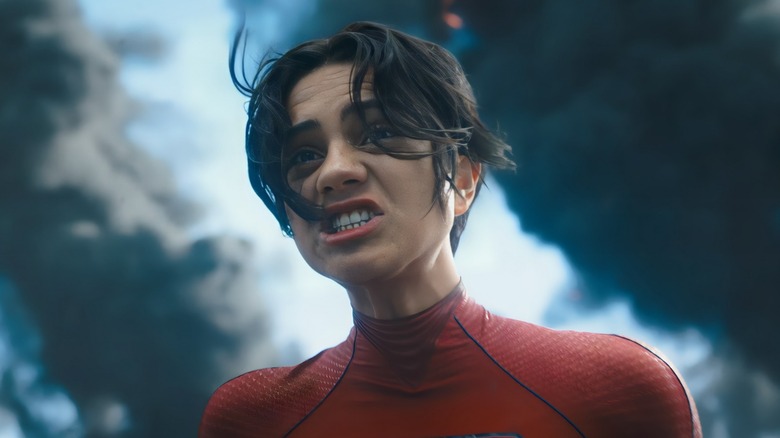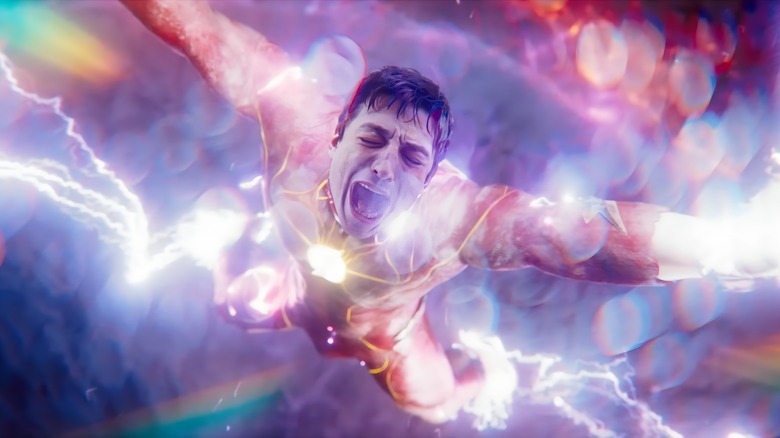The Flash's CGI Was Bad For An Inexcusable Reason, Says A VFX Artist On The Film
Now that "The Flash" has finally arrived in theaters, it can't seem to get ahead of the negative news surrounding it. Notably, the CGI has stuck out to both fans and critics — and it isn't sitting right with some viewers. This is especially the case with the horrifying microwave baby scene. Recently, a crew member on the VFX team for "The Flash" shared his experience and revealed some useful insights.
Zach Mulligan, aka no_the_robot on TikTok and YouTube, dived into his experience working on "The Flash" and the unfortunate trend CGI-heavy superhero flicks have been plagued with. Following the backlash of the look of the CGI in "The Flash," he took to TikTok to personally tell viewers about his time working on the film and the stressful conditions he and his co-workers were under.
Mulligan explained that studios like Marvel and Warner Bros. come to VFX companies with a certain amount of shots that they need completed for a particular sequence. In response, the VFX companies will place bids on the number of shots needed. Mulligan then explained that the work needed for each shot varies dramatically, but they are still each considered a single shot in terms of the bid process. "The amount of work per shot varies dramatically. So one shot could have a wire removal, another shot could have wire removal, smoke sim[ulation], fire sim[ulation], face replacement, [and] green screen. Despite the difference in workload between those two shots, they both are considered just one shot each."
This distinction ultimately leads to a much heavier workload for VFX artists, as Mulligan went on to describe.
The VFX team was severely overworked on The Flash
As Zach Mulligan discussed in his TikTok video, the heavy workload for VFX artists reflects the cutthroat corporate attitudes of major studios. "VFX artists are forced to work relentless hours over time, almost every day, including weekends," Mulligan said. He also mentioned that particular film led him to make the fateful call to his co-workers asking them to work overtime, which ultimately caused him to leave the position after just three months. This crunch-time mentality is both bad for employees and the end product of the film, which typically leads to a string of avoidable and embarrassing CGI moments.
Mulligan also added that there's an extra element of pressure for VFX companies to not disappoint the studios for fear of burning relationships with the employing studios. He then went on to explain why studios are more concerned with speed over quality. "[The] only thing they care about is pleasing their shareholders on the next earnings call," Mulligan said. "To them: they've managed to increase the output of superhero movies that are still making billions of dollars, and they've reduced the time it takes to make them. Studios could easily space out their projects to give these super-talented and hard-working artists more time to work on the film. But that's just not in the best interest of the shareholders."
As for what CGI work looks like when it's done right, Mulligan pointed to "Avatar: The Way of Water," mentioning that the work on the film was a decade-long process. However, that isn't the case for most blockbusters, like "The Flash." As Mulligan shared, this is precisely why we need change for better working conditions and better content.

